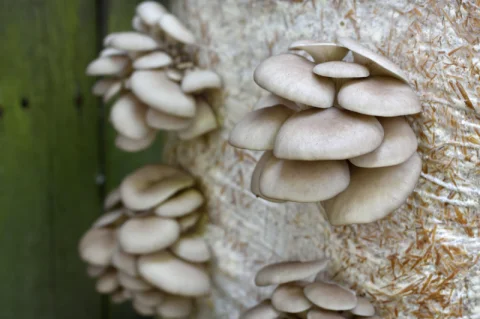Laminar Flow Hoods for Mushroom Cultivation
HEPA filters are used by mushroom cultivators to create laminar flow hoods. Their fine filtration ability is utilised to create sterile environments to prevent contamination of cultures. Contaminants include dust, dirt, fungi, bacteria, and viruses that can travel in the air.
Mushrooms are highly vulnerable to infection when they are first growing so cultivation requires a clean and sterile environment.

HEPA filters have multiple layers to provide a remarkably high level of filtration. An outer layer acts as a barrier against large particles, those that can be seen with the naked eye, including dust, hair and dirt. Inside the large filter is a collection of thin filters that act to prevent smaller particles from passing through. This thinner filter is made up of minute glass fibres that can catch the microscopic contaminants from the air. The combination of the larger and finer filter layers enable the HEPA to filter against both large and small particle sizes, thus creating a sterile environment.
HEPA filters are placed at the front of the hood to filter the incoming air to greatly reduce the chance of incoming airborne contaminants and therefore to create a sterile environment. A fan is placed within another wall of the hood to draw air in and across the HEPA filter. A pre-filter, with less air resistance than the HEPA (e.g. Promedia T15), is attached over the fan on the outside of the hood. A net/covering should be attached over the HEPA on the outside of the hood to protect the delicate filter, to lengthen efficiency.
The HEPA filters recommended for laminar flow hoods are of H13 and H14 efficiency. H13 prevent >99.95% of contaminants from flowing through and have a pressure drop of 90 Pa. H14 are slightly more efficient, preventing >99.995% of contaminants and have a pressure drop of 100 Pa.
Related Articles
Which Depth of HEPA Filter Do I Need? A Complete Guide
Which Depth of HEPA Filter Do I Need? A Complete Guide When it comes to selecting a HEPA (High Efficiency Particulate Air) filter for your air filtration system, one of the most common questions we hear is: “What depth of HEPA filter should I ...HEPA Filters: Wooden Frame vs. Metal Frame – Which One Is Right for You?
One of the most common questions we receive is: What’s the difference between HEPA filters with wooden frames and those with metal frames? If you’re trying to decide which type of HEPA filter is best suited for your needs, this article will guide you ...Why Mushrooms Rely on HEPA Filters: Understanding Mycology, Fungiculture, and Air Quality
Did you know that a large number of our HEPA filters are purchased by individuals and businesses involved in mushroom cultivation? From hobbyists growing gourmet mushrooms at home to commercial growers supplying supermarkets and food wholesalers, the ...Types of Spray Booth Filter
Spray booths rely on efficient air filtration to maintain a clean, safe, and high-performance environment. At the core of this process are two types of filters: Input Filters – Clean incoming air by removing dust and other contaminants before it ...What is a Canopy Filter?
A Guide to Kitchen Baffle Filters and Grease Filtration Canopy filters, also known as kitchen filters, grease filters, cooker hood filters, or baffle filters, play a crucial role in commercial and residential kitchen ventilation systems. Their main ...